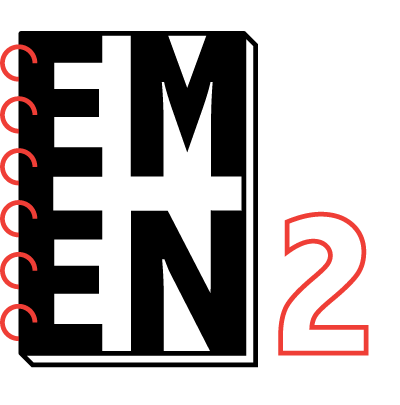|
Size: 396
Comment:
|
Size: 3420
Comment:
|
| Deletions are marked like this. | Additions are marked like this. |
| Line 1: | Line 1: |
| {{attachment:emen2logo.png|EMEN2}} | {{attachment:emen2logo.png|EMEN2|width=250}} |
| Line 3: | Line 3: |
| = EMEN2 = | == EMEN2 == |
| Line 7: | Line 7: |
| == Documents == | Structural and computational biologists frequently work with complex data sets assembled from diverse experimental sources, public resources, and analysis methods. Archiving and mining these data sets with their complicated interrelationships remains a persistent challenge, particularly with “open science” initiatives to make entire workflows, including all raw and intermediate data, available with publications. To address these needs, we have developed EMEN2, an object-oriented scientific database and electronic notebook. EMEN2 uses a flexible schema based on plain text descriptions of experimental protocols. These protocols may be local and describe techniques and data within a single lab group, reference published ontologies (e.g. GO, NCBO BioPortal), or contain links to external resources (PDB, GenBank, etc.). Similarly, an EMEN2 installation can itself act as a resource, providing public access to selected protocols and data. While originally developed to serve the needs of the cryo-EM community, we believe EMEN2’s architecture provides an excellent foundation for many other scientific endeavors. EMEN2 is developed using all open-source technologies. The core database is written in the Python programming language, with BerkeleyDB providing a robust embedded database back-end. The infrastructure is highly modular, permitting new ontologies to be fully implemented using only it’s “Web 2.0” interface. In addition, there is a remote API available for client applications. The included EMDash program is a standalone GUI tool for equipment integration, currently used to upload data transparently from our electron microscopes as it is being collected, as well as integrate with other lab equipment. The EMEN2 server itself can be extended in a similar way by writing custom Python modules, which can expose additional views to the Web interface, or new methods to the API. A full ontology for cryo-EM has been established for internal use and has been in active use at the NCMI for ~3 years. It is used to archive all data at the center, and currently provides services for over 750 users, with over 16 terabytes of data in 460,000 records. As an example of its extensibility and ontology mapping capabilities, we have developed a module for harvesting the database and producing PDB compliant XML files which can be used to seed a structure deposition to EMDatabank.org. == EMEN2 Demo == There is a publicly accessible, read-only EMEN2 installation for accessing the NCMI's public datasets: http://ncmi.bcm.edu/publicdata/db/home/ An [[EMEN2/Public_Data_Server|overview document]] has been created to introduce new users to the EMEN2 web interface. It includes a number of screenshots. == Installation and Configuration == * [[http://ncmi.bcm.edu/ncmi/software/software_details?selected_software=EMEN2|Download]] |
| Line 13: | Line 34: |
| * [[EMEN2/config.yml|Configuration]] | * [[EMEN2/Config|Configuration]] |
| Line 15: | Line 36: |
| * [[EMEN2/User Guide|User Guide]] | * [[EMEN2/Backups|Maintenance and Backups]] |
| Line 17: | Line 38: |
| * [[EMEN2/Integration|Instrument Integration]] | == EMEN2 Client Documentation == |
| Line 19: | Line 40: |
| * [[EMEN2/Ontologies|EMEN2 Ontologies]] | |
| Line 21: | Line 41: |
| * [[EMEN2/FAQ|FAQ]] | * [[EMEN2/emen2client.py|Command line upload/download client: emen2client.py]] * [[EMEN2/emdash|EMDash microscope client]] * [[EMEN2/EMAN2_Integration|EMAN2 Integration]] == EMEN2 API == Coming soon |

EMEN2
An extesible, object-oriented electronic lab notebook
Structural and computational biologists frequently work with complex data sets assembled from diverse experimental sources, public resources, and analysis methods. Archiving and mining these data sets with their complicated interrelationships remains a persistent challenge, particularly with “open science” initiatives to make entire workflows, including all raw and intermediate data, available with publications.
To address these needs, we have developed EMEN2, an object-oriented scientific database and electronic notebook. EMEN2 uses a flexible schema based on plain text descriptions of experimental protocols. These protocols may be local and describe techniques and data within a single lab group, reference published ontologies (e.g. GO, NCBO BioPortal), or contain links to external resources (PDB, GenBank, etc.). Similarly, an EMEN2 installation can itself act as a resource, providing public access to selected protocols and data. While originally developed to serve the needs of the cryo-EM community, we believe EMEN2’s architecture provides an excellent foundation for many other scientific endeavors.
EMEN2 is developed using all open-source technologies. The core database is written in the Python programming language, with BerkeleyDB providing a robust embedded database back-end. The infrastructure is highly modular, permitting new ontologies to be fully implemented using only it’s “Web 2.0” interface. In addition, there is a remote API available for client applications. The included EMDash program is a standalone GUI tool for equipment integration, currently used to upload data transparently from our electron microscopes as it is being collected, as well as integrate with other lab equipment. The EMEN2 server itself can be extended in a similar way by writing custom Python modules, which can expose additional views to the Web interface, or new methods to the API.
A full ontology for cryo-EM has been established for internal use and has been in active use at the NCMI for ~3 years. It is used to archive all data at the center, and currently provides services for over 750 users, with over 16 terabytes of data in 460,000 records. As an example of its extensibility and ontology mapping capabilities, we have developed a module for harvesting the database and producing PDB compliant XML files which can be used to seed a structure deposition to EMDatabank.org.
EMEN2 Demo
There is a publicly accessible, read-only EMEN2 installation for accessing the NCMI's public datasets:
http://ncmi.bcm.edu/publicdata/db/home/
An overview document has been created to introduce new users to the EMEN2 web interface. It includes a number of screenshots.
Installation and Configuration
* Download
* Install
EMEN2 Client Documentation
* Command line upload/download client: emen2client.py
EMEN2 API
Coming soon
